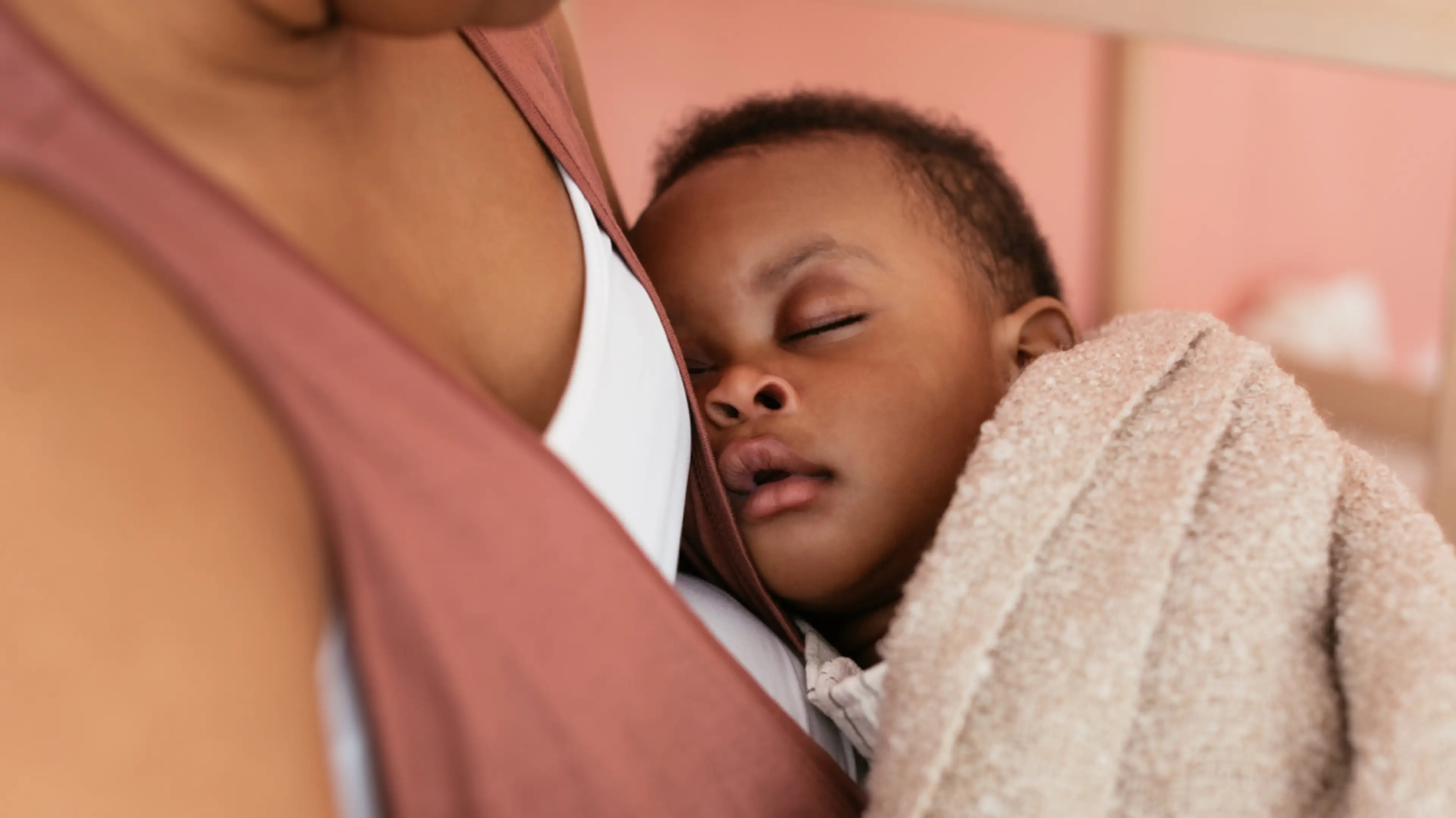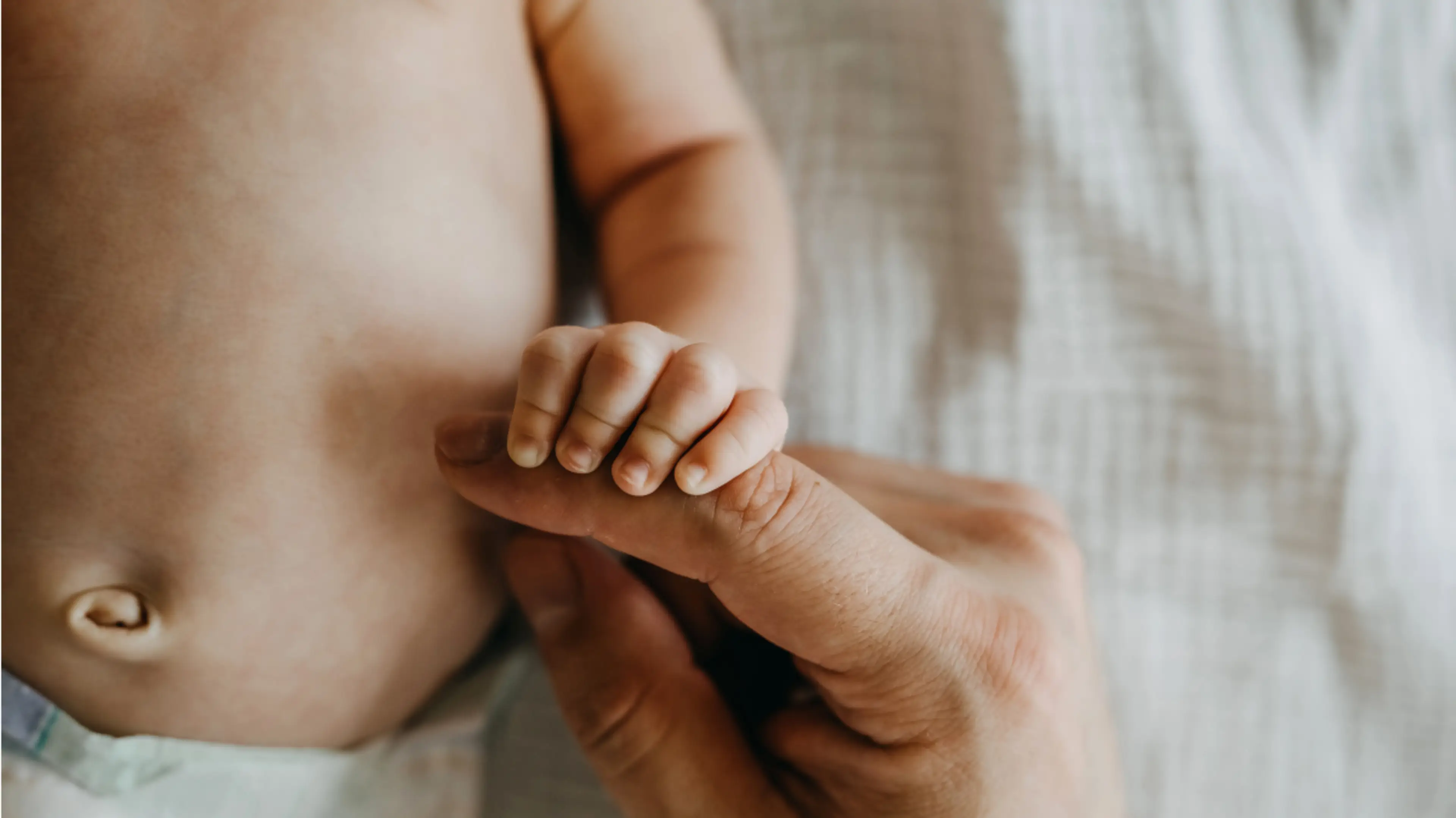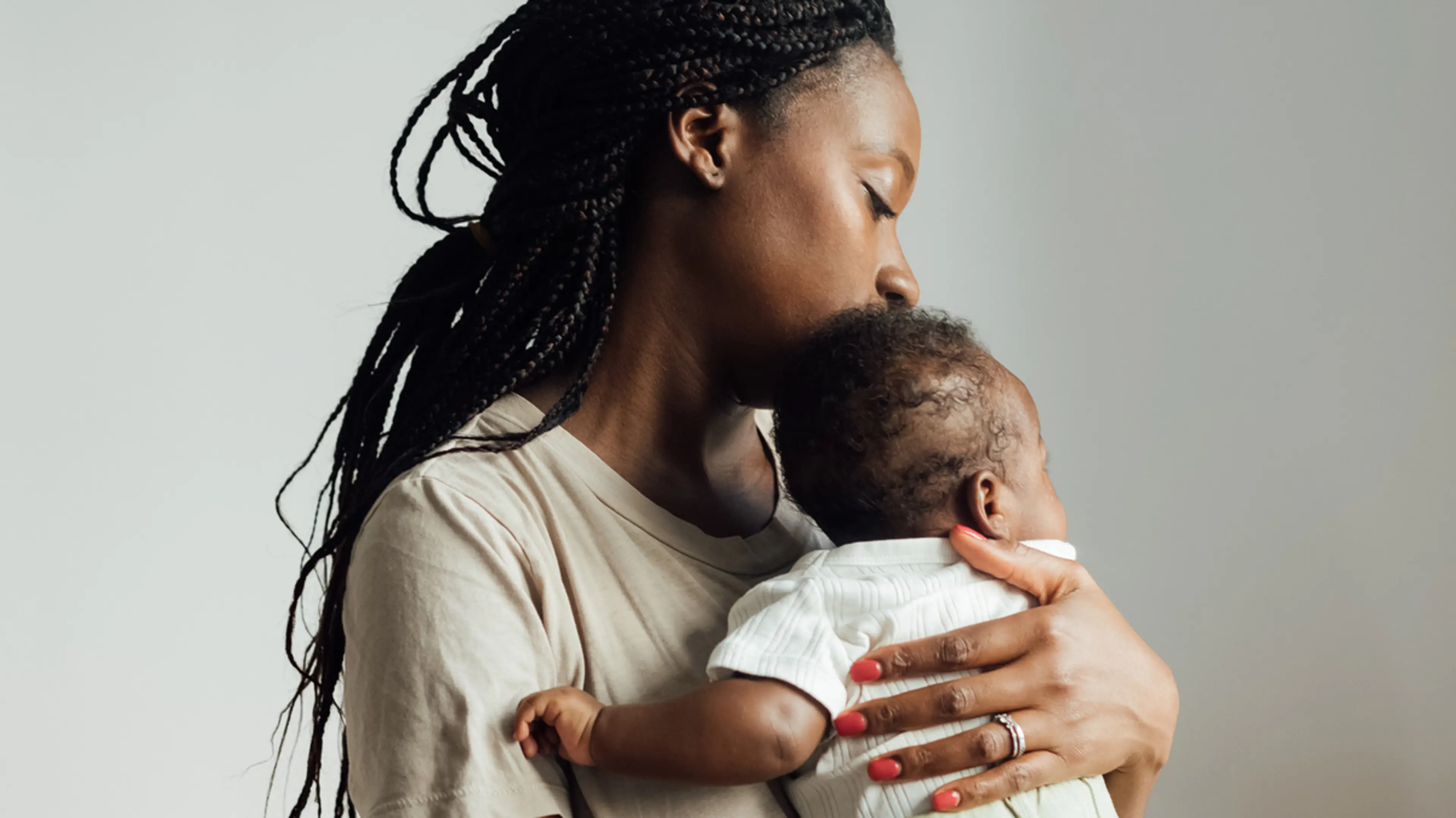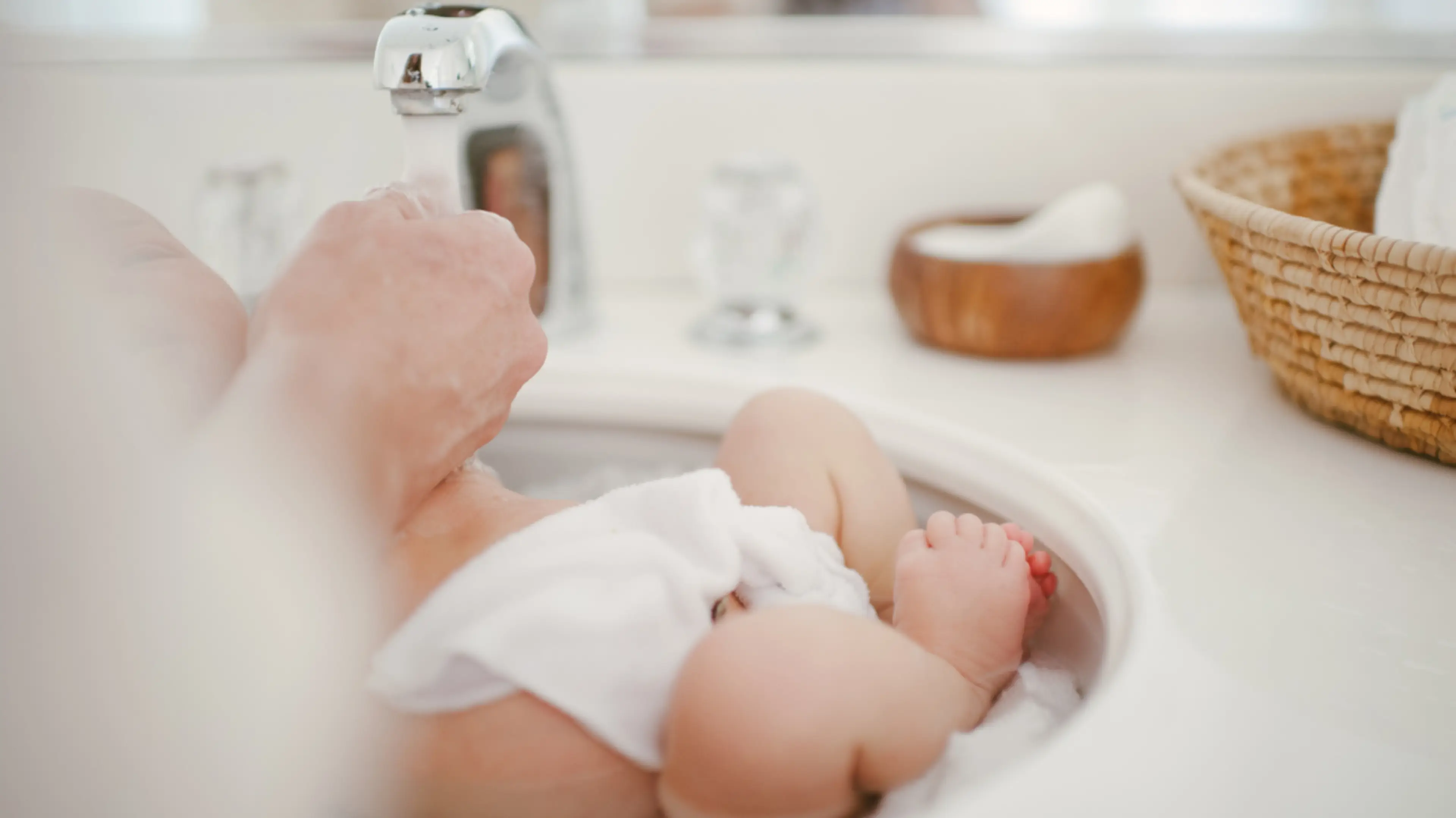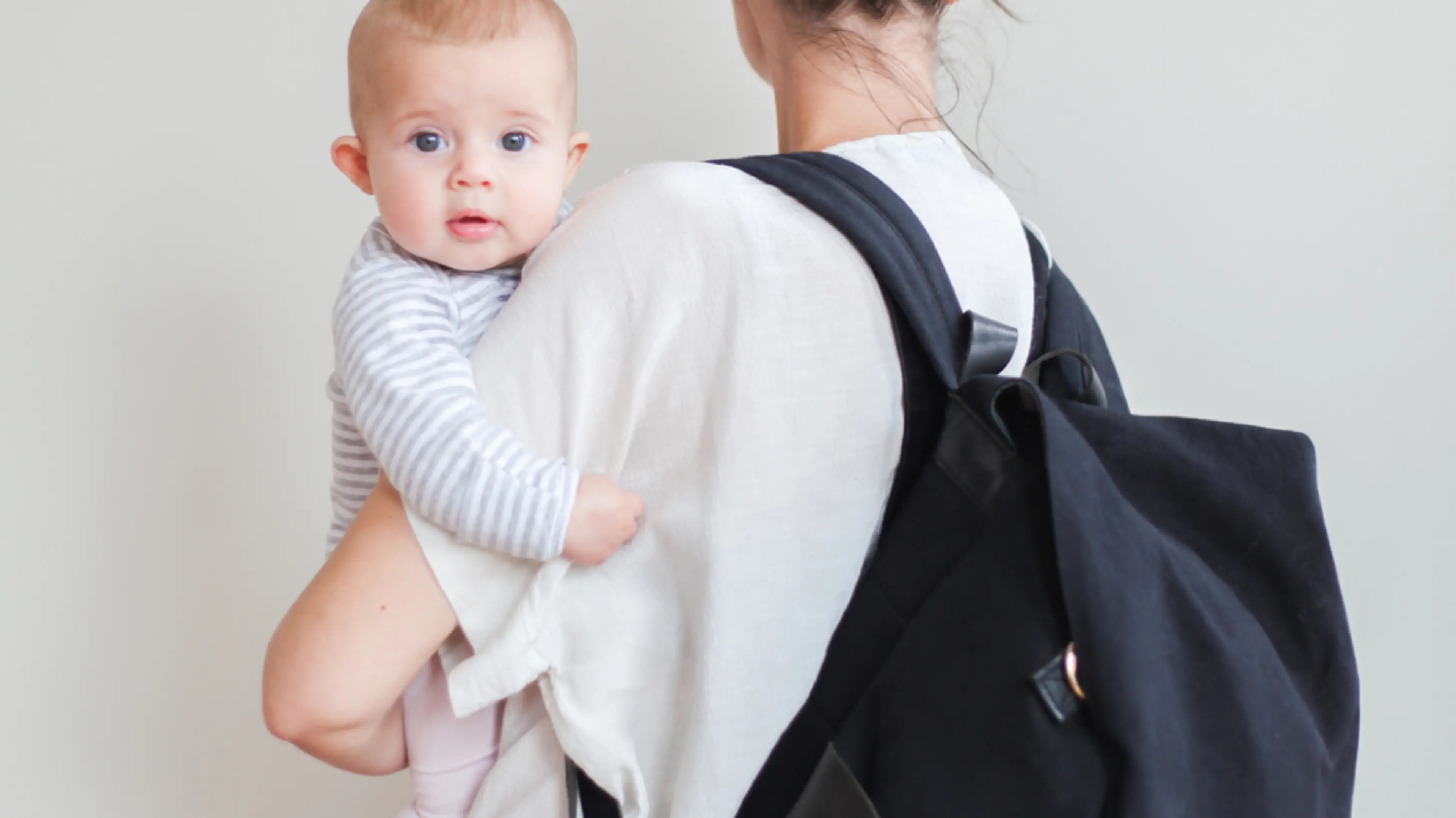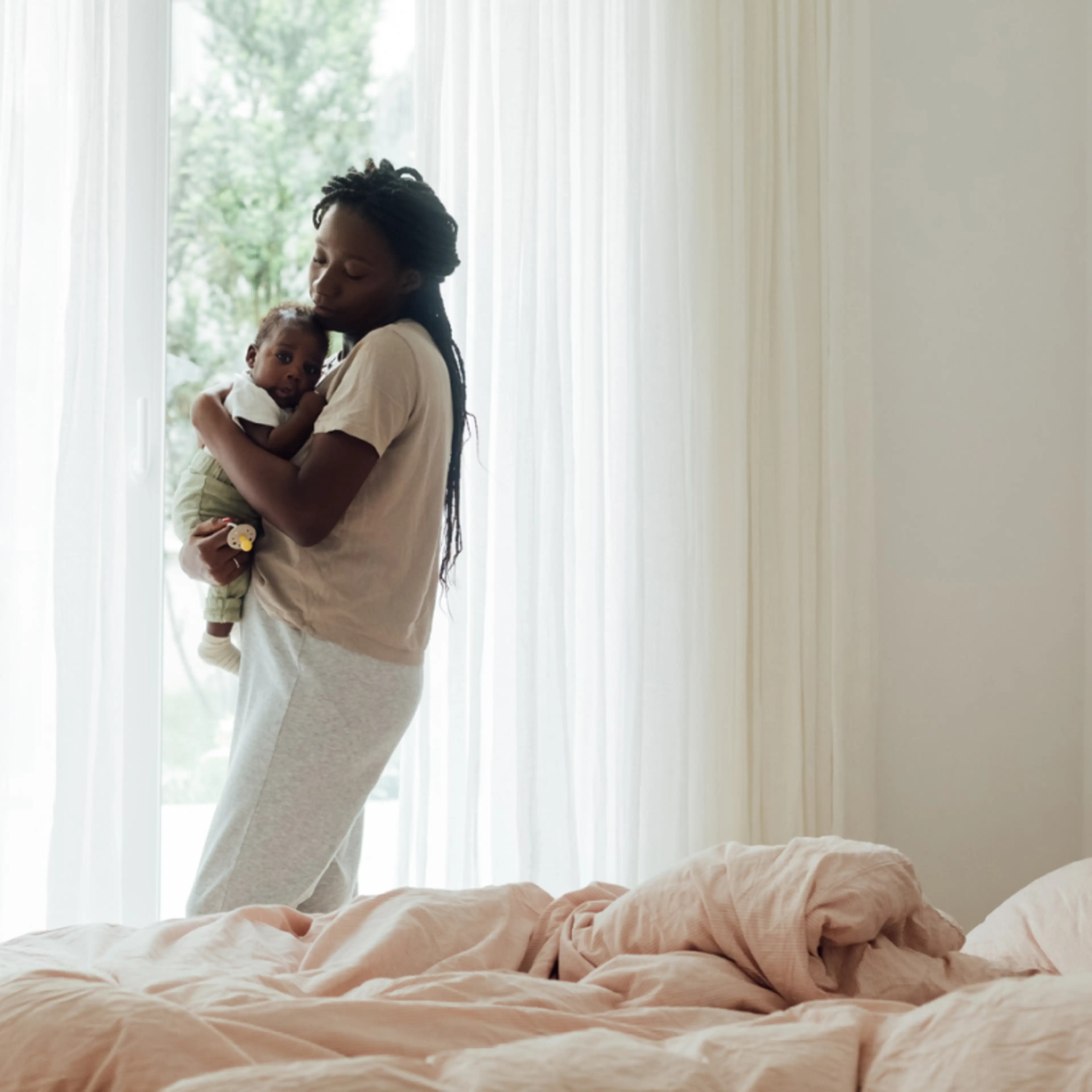TLDR: Just when you think you have your newborn’s sleep patterns down, they move out of the newborn stage and their sleep needs change once again. This is the time when you may experience sleep regressions, as well as when you might want to consider sleep training and transitioning them to a crib. Here are some things to consider when you make these important decisions, so you can start getting some more sleep, too.
Welcome to the transition from newborn sleep to infant sleep! Though many parents commonly refer to any baby between one month old and one year old as a newborn, they’re considered an infant by month four, and a toddler by one year.
Your infant’s sleep needs won’t change much at month four, but this is a time when many families will start to think about their longer-term sleep goals. Will you sleep train your baby? Do you plan to transition to a crib? Will you be out of town and need support with your baby while you’re away? Questions like these are just a few examples of how you’ll need to plan and adjust to meet your infant’s needs.
The good news: your baby will begin to sleep for longer stretches as well as continue to take plenty of daytime naps.
Heather Turgeon1 , a sleep consultant and co-author of The Happy Sleeper2 , says there is a silver lining of this stage in regards to sleep: “By the time babies reach five months, they can self-soothe and a relatively mature internal clock. In other words, they want to sleep and they are highly capable of sleeping through the night from this age onward. The most common response we get from parents who use our approach at this age is surprise (and pride) at how quickly their baby's sleep improves.”
So, let’s get into infant sleep from months four to six.
Your Infant’s Sleep Cycle From Month 4 to 6
If you read our guide to newborn sleep from months one to three, you’ll recall that newborns have two sleep stages (as opposed to an adult’s four3 ) that typically last anywhere from 40 to 55 minutes, depending on your baby. These include:
Active4 : When your baby is still squirmy, maybe making noises.
Quiet: their version of deep sleep, when dreaming would occur for adults.
Around months three to six, your baby will start to cycle through the four stages of sleep, similar to an adult. Keep in mind, though, that they will still likely startle and wake easily.
How Much Sleep Does Your Infant Need?
By months three to four, your baby’s nap times and frequency will start to decrease. But the change probably won’t be dramatic. As a general guideline, Turgeon says, “Most babies do well with three naps until nine months, two naps until 15 months, and then one nap.” They will still be sleeping between 12 and 15 hours total over a 24-hour period.
You might be lucky and start to get a full eight hours of sleep at night, though this isn’t super common quite yet. Something you should also think about is that if your baby does sleep for eight hours at night, but their bedtime is at 7 p.m., then they will be waking up around 3 a.m. Timing is everything!
What Are Infant Sleep Regressions?
If you already have an older kid or have friends or family with small children, then you may be familiar with infant sleep regression. Sleep regressions are usually signs of developmental changes in your baby, and while they can be difficult, they’re actually a good thing.
Turgeon explains that between three-and-a-half and four months, many babies have a surge in cognitive activity that causes them to feel more alert and activated at night. During this time, you may find your baby is taking very short naps and you're helping them more than usual to fall back to sleep at night.
A sleep regression means that you and your baby may experience a week or two of disrupted sleep patterns before you return to a normal sleep routine. For some babies, though, a sleep regression may last as long as a month. Signs that your baby is experiencing sleep regression include increased fussiness during the day, fighting naps, and more frequent night wakings.
Understanding Your Infant’s Sleep Signals
Your baby’s sleep cues will look similar to how they did before. If your infant is yawning, wiping their face, or zoning out, they’re probably starting to get ready for a nap. Some new signals you might be on the lookout for include redness around the eyelids, drooping or “tired eyes,” more fussiness than usual after a feeding, and jerky hand and leg movements.
If your baby is showing you any of these signals, you’ll want to reduce stimuli and start your nap time routine. This may include putting away toys, closing blinds and curtains, or rocking them.
Transitioning to a Crib
Many babies start their sleep journey in a bassinet at your bedside. Whether that’s the case or not, you may be wondering when it will be time for your baby to move to their own full-size crib.
It might make sense to move your baby to a crib around this time if they’re outgrowing their bassinet. If you do decide to take this route, here are a few safe sleep pointers from the American Academy of Pediatrics5 (AAP):
Use a full-size crib to accommodate growth spurts. This allows your crib to be versatile and spacious.
Put your baby down to sleep on their back. This decreases the chances of Sudden Infant Death Syndrome (SIDS).
A firm mattress is the safest option for SIDS prevention. It can also help prevent your baby from moving into a dangerous position during the night.
Clear your baby’s sleeping space! No pillows, stuffies, crib bumpers, or blankets should be in the crib. This can also help ensure your baby stays safe regardless of any tossing or turning.
Cool it down! Set the thermostat to 68 to 72 degrees Fahrenheit for your baby to increase their quality of sleep and prevent them from overheating.
Talk to your doctor if the baby’s crib is in their room, as the AAP recommends that your baby rooms with you for the first six months.
If you aren’t sure whether your baby is ready for the crib, or if you have questions about infant sleep in general, you may benefit from meeting with a pediatric sleep specialist.
Thinking About Sleep Training?
By month three or four, you may begin to see signs that your baby is ready for sleep training. If they have more energy, are staying awake for longer stretches, and eat less during nighttime feeds, then you might want to think about getting started.
Sleep training is a hot topic in the parenting world, and we get that it can be fraught. While many parents think of “crying it out” when it comes to sleep training, that’s not the only option. The main principle is to teach your baby to comfort themselves so they can go to sleep on their own. Whether or not you want to try it is a deeply personal decision that is completely up to you and your family.
If you do decide to give it a go, here’s a list of sleep training methods to try. Remember, the best method is the one that feels right for you, your baby, and your family.
Extinction Method: Otherwise known as cry it out, with this method, you put your baby down fully awake, and let them fall asleep alone. In the first night or two, there’s usually crying (as you’d expect from the name), but without you coming in to pick them up or soothe them, the idea is that they learn to soothe themselves. The first couple of nights are usually tough if you have a hard time hearing your baby cry, but they tend to learn to self-soothe within a few nights. “Extinction” basically means you’re removing your baby’s sleep crutch—you and your soothing. Learn more about the extinction method6 here.
Ferber Method: If the original-recipe extinction method sounds too harsh for you, the Ferber method might be right. It’s also known as the “graduated extinction” method and builds on the above technique, but after you put your baby down (again, fully awake), you go into the room to soothe them, but after a certain number of minutes, you leave again. You repeat that for different intervals of time, graduating to longer stretches. Read more about the Ferber method7 here.
Chair Method: If the idea of letting your baby cry alone makes you uncomfortable, you might give the chair method a try. After you put your baby down for sleep, you stay in the room in a chair next to the crib, so you can show your baby that you’re there and even pat their back or bottom. Each night, move your chair a little further away as your baby gets more used to the new routine, and eventually, they won’t need you there anymore. The downside can be that it can take longer than the above methods, but it’s also known as a gentler alternative. Find out more about the chair method8 here.
Pick Up, Put Down Method: As the name implies, picking up your baby to soothe them after they cry is allowed in this method. After first leaving the room, when they cry, you can pick them up instead of just letting them see you—and then you put them back down and leave the room again. You repeat this for as long as it takes. Like the chair method, this can take a bit longer than the extinction and Ferber methods since your baby knows you’re there. Learn more about how to do the pickup, and put down method9 here.
Fading Method: This sleep training technique is more about finding the right bedtime for baby if they’re not going down easily. After the first time, you put the baby down and leave the room, you wait to see if they soothe themselves to sleep. If they don’t, you go in and pick them up and take them out of the room. Then, you try again after 30 minutes or so until the baby goes to sleep. It might be helpful to keep a log of the time your baby goes to sleep easiest, or simply note their sleepy cues (like rubbing their face or yawning) so you get more acquainted with the ideal bedtime for your little one. This one works for toddlers and older kids too, especially if you’re trying to move up a bedtime. Find out how to apply the fading method here10 .
When Can We Start Safely Co-Sleeping?
Like sleep training, the decision to co-sleep is personal and one that can only be made by you and your family. The AAP recommends that parents share a room with their babies for at least the first six months, but your baby should be in their bassinet and not in your bed.
If you decide to co-sleep, it is not recommended to begin until your child is at least one. This will help reduce any safety concerns and ensure your child is able to free themselves from restraints if they roll around and move during the night.
Next Stop: Sleeping Through the Night!
Though we wouldn’t say it’s exactly normal, some babies will begin to sleep through the night around six months of age. Establishing a bedtime routine early on can make all the difference in helping your baby make the leap.
If your baby is experiencing a regression or they haven’t been a “great sleeper” since birth, you might want to consider working with a pediatric sleep specialist11 . Sleep consultants can help you navigate through your family’s unique circumstances with ease and confidence.
Also remember, no two babies are alike. If you have multiple children, you may come to find that each experience is unique. Whatever your baby’s sleep temperament, rest assured that more rest and better sleep is on the way—we promise.

